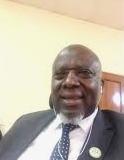Invisible and Visible Hands in Uganda’s Secondary Education Market
DOI:
https://doi.org/10.53449/ije.v2i1.68Keywords:
invisible hand, visible hand, secondary education market, education industry, market, government failureAbstract
In this article we analysed market and government mechanisms in Uganda’s Secondary Education Market (USEM) using Adam Smith’s invisible hand of economic rationality preposition. We highlighted: the rationale for USEM and the distinction between education industry and market, the market concept in relation to USEM, relationship between visible and invisible hands in USEM, accountability measure in USEM, and examples of market and government failure. We concluded that since all successful markets are subject to effective regulation, the visible hand must superintend its invisible counterpart more effectively. Finally, we recommend the need for the visible hand to strengthen its oversight role, mobilize more resources and improve accountability measures; otherwise, expansion of secondary education will be a misspent investment if the invisible and visible hands are left to fail.
Downloads
References
Adams, J. E., & Hill, P. T. (2002). A Market Model of Education Accountability; Centre on Reinventing Public Education-Seattle.
Au, W. (2007). High stakes testing and curricular control: A qualitative metasynthesis. Educational Researcher, 36(5), 258-267.
Bennell, P. (2000). The impact of economic liberalisation on private sector training provision in Zimbabwe. Assessment in Education, 7(3), 439-454.
Bregman, J., & Stallmeister, S. (2002). Secondary education in Africa: Strategies for renewal. Africa Region, AFTHD, World Bank.
Carroll, E. (2011). Government failure: Definition & examples. Retrieved from https://study.com/academy/lesson/government-failure-definition-examples.html
Chen, Y. (2018). Mature market economy: A combination of effective government and efficient market. Arch Bus Adm Manag: ABAM-115. DOI: 10.29011/ABAM-115. 100015
Connolly, S., & Munro, A. (1999). Public choice. Chapter 8 in Economics of the Public Sector, Pearson, Harlow, Essex.
Cook, P. (2002). Competition policy, market power and collusion in developing countries. Working Series Paper No. 33 Harold Hankins Building, Precinct Centre Oxford Road, Manchester.
Coulson, A. (2004). How markets affect quality: Testing a theory of market education against international evidence. Prepared for the Cato Institute: Educational Freedom in Urban America: Brown v. Board after Half a Century.
Day, A. L., Mcloughlin, M., Aslam, J., Engel, J., Wales, S., Rawal, R., … Rose, P. (2014). Role and impact of private schools in developing countries: A rigorous review of the evidence. Final report, Education Rigorous Literature Review, Department for International Development.
Dill, D. (1997). Higher education markets and public policy. Higher Education Policy, 10, 167- 185.
Dizikes, P. (2011). The visible hand. MIT News, April 28. MIT Talk by Eliot Spitzer on the Role of government in regulating markets.
Education Planning and Policy Analysis Department. (2012). Report on dropout study in Universal Secondary Education (USE). Ministry of Education & Sports (MOES).
Fligstein, N. (1997). Markets, politics, and globalization. Uppsala: Acta Universitas Upsalaensis. Studia Oecono miae Negotiorum.
Genza, M. G., & Musisi, B. (2018). Educational entrepreneurship (EE): Delineating & highlighting its domain, importance & feasibility in Uganda’s context. Journal of Education and Learning (EduLearn), 12(1), 126-136.
Gibbs, P. (2001). From the invisible hand to the invisible handshake: Marketing higher education Intercollege, Nicosia, Cyprus. Research in Post-Compulsory Education, 7, 3.
Government of Uganda. (2008). The Education (pre-primary, primary and post-primary) Act (2008). Acts Supplement No. 8, The Uganda Gazette, CI(44), 13.
Greaney, V., & Kellaghan, J. (1995). Equity issues in public examinations in developing countries. World Bank Technical Paper No. 272 Asia Technical Series. W. B. Washington, DC.
Hanson, M. E. (1992). Educational marketing and the public schools: Policies, practices, and problems. Educational Policy, 6(1), 19-34.
doi: 10.1177/0895904892006001002
Henig, J. R. (1994). Rethinking school choice: Limits of the market metaphor. Princeton, NJ: Princeton University Press.
Henry, G. T., & Gordon, C. S. (2003). Can competition improve educational outcomes? A paper prepared for the National Institute for Early Education Research.
Hoxby, C. M. (1994). Do private schools provide competition for public schools? NBER Working Paper No. 4978.d.
Hoxby, C. M. (2003). School choice and school productivity: Could school choice be a tide that lifts all boats? In C. Hoxby (Ed.). The economics of school choice. Chicago, IL: University of Chicago Press for the NBER.
Huylebroeck, L., & Kristof, T. (2015). Universal Secondary Education (USE) in Uganda: Blessing or curse? In F. Reyntjens, S. Vandeginste, & M. Verpoorten (Eds.). The impact of USE on educational attainment and performance (pp.349-372). L’Afrique des Grands Lacs: Antwerp: University Press.
Kellaghan, T. (2004). Public examinations, national and international assessments, and educational policy. Educational Research Centre, St. Patrick’s College, Dublin.
Kellaghan, T., & Greaney, V. (2004). Monitoring performance: Assessment and examinations in Africa. Paris: Association for the Development of Education in Africa; Washington DC: World Bank.
Kivisto, J. (2002). Markets and market-like incentives in the public financing of higher education. Department of administrative science; University of Tampere, Finland. CHEPS & UNESCO.
Levy, D. C. (2003). Profits and practicality: How South Africa epitomizes the global surge in commercial private higher education. PROPHE Working Paper. Albany NY. http://www.albany.edu/~prophe/publication/Profits.doc.
Lubienski, C., & Garn, G. (2010). Evidence and ideology on consumer choices in education markets: An alternative analytical framework. Current Issues in Education, 13(3), 1-5.
Lundström, U., & Holm, A. S. (2011). Market Competition in Upper Secondary Education: perceived effects on teachers’ work. Policy Futures in Education, 9, 2. Retrieved from www.wwwords.co.uk/PFIE
Magnison, S. (2004). Australian higher education: National and global markets. In Teixeira et al. (Eds.). Markets in higher education: Rhetoric or reality? Kluwer Academic Publishers, Dordrecht.
Middleton, C. (2000). Models of state and market in the modernisation of higher education. British Journal of Sociology of Education, 21(4), 537–54.
Ministry of Education & Sports. (2003, 2005, 2007, 2008, 2009, 2010, 2013, 2015). Uganda education statistical abstract. Official Publication Volume.
Ministry of Education & Sports. (2013). The secondary sub-sector. Department of secondary education.
Ministry of Education & Sports. (2013). Education Abstract 2013, Kampala, Education Planning and Policy Analysis Department.
Ministry of Education & Sports. (2019). http://www.education.go.ug/data/ smenu/1/Mission%20and%20Objectives%20.html
Musisi, B. (2013). Pedagogical ramifications of the competitive secondary education market in Uganda: A case of proprietary secondary schools. (Unpublished PhD Dissertation). Makerere University, Uganda.
New Internationalist. (2017). Bad education. Time to fix it. The World unspun. NI505 September newint.org.
Nichols, S. L., & Berliner, D. C. (2008). Why has high-stakes testing so easily slipped into contemporary American life? Phi Delta Kappan, 89(9), 672-676.
Rose, P. (2002). Is the non-state education serving the needs of the poor? Evidence from East and Southern Africa. A paper prepared and presented at the 'Making Services Work for Poor People' World Development Report (WDR) 2003/04 Workshop held at Eynsham Hall, Oxford 4-5 November.
Rothschild, M., & White, L. J. (1995). The analytics of the pricing of higher education and other services in which the customers are inputs. Journal of Political Economy, 103(3).
Simkins, T. (2002). Reforms, accountability and strategic choice in education. In M. Preedy, R. Glatter, & C. Wise (Eds.). Strategic leadership and educational improvement (pp. 215-232). London: The Open University with Paul Chapman Publishing.
Teixeira, P., Jongbloed, B. B., Dill, D. D., & Amaral, A. (2005). Markets in higher education: Rhetoric or reality? Kluwer Academic Publishers, Dordrecht.
Teixeira, N. P. (2006). Markets in Higher Education: Can we still learn from economics’ founding fathers? Centre for Studies in Higher Education, University of California, Berkeley.
Walberg, H. J., & Bast, J. L. (2001). Education and capitalism: How overcoming our fear of markets and economics can improve America's schools. Stanford, CA: Hoover Institution Press.
Wooldridge, A. (2012). The visible hand in The Economist, Jan 21st 2012, Special Report.
World Bank. (2002). Handbook on public-private partnerships in education. Washington DC, EdInvest.








